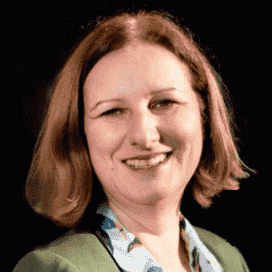Remote Sensing-Based Proxies to Predict Socio-Economic and Demographic Data
A special issue of Remote Sensing (ISSN 2072-4292).
Deadline for manuscript submissions: closed (30 June 2021) | Viewed by 19950
Special Issue Editors
Interests: urban remote sensing; urban modelling; spatial statistics; urban planning; slum mapping; deprived area mapping
Special Issues, Collections and Topics in MDPI journals
Interests: geospatial analysis; geography; machine learning; remote sensing; geographic object-based image analysis; deep learning
Special Issues, Collections and Topics in MDPI journals
Interests: urban remote sensing; urban slums; urban poverty; urban health
Interests: household survey methods; urban slums; urban health; urban poverty
Special Issues, Collections and Topics in MDPI journals
Special Issue Information
Dear Colleagues,
The continuous urbanization in many cities of the Global South is coupled with rapid socio-economic and demographic changes in urban, peri-urban, and rural areas. Many cities in the Global South are rapidly growing, which is accompanied by urban transformation processes, such as gentrification, but also by an increase in poor urban neighborhoods. According to the United Nations, of the 36 fastest growing cities (with an average annual growth rate of more than 6%), seven are located in Africa, while 28 are found in Asia. Cities are commonly better studied as peri-urban or rural areas. But, in all areas, the socio-economic and demographic changes are rapid, their linkages are not well understood, and the data are often not available or are outdated. Traditional survey-based methods are slow and costly for covering large regions, and the data are mostly outdated when they are finally published (e.g., national census). Therefore, remote sensing has a vast potential to provide such information so as to support monitoring transformations and provide relevant information for planning and decision making. With this Special Issue, we aim to provide an outlook on how EO-based proxies of socio-economic and demographic data could contribute to rapidly providing relevant information when large areal coverage and/or multi-temporal information is required, in support of sustainable development, in general, and specifically, supporting the monitoring of the 17 Sustainable Development Goals (SDGs).
Related References
- Kuffer, M.; Wang, J.; Nagenborg, M.; Pfeffer, K.; Kohli, D.; Sliuzas, R.; Persello, C. The scope of earth-observation to improve the consistency of the sdg slum indicator. ISPRS Int. J. Geo-Inf. 2018, 7, 428.
- Taubenböck, H.; Wurm, M.; Setiadi, N.; Gebert, N.; Roth, A.; Strunz, G.; Birkmann, J.; Dech, S. Integrating remote sensing and social science. In Joint Urban Remote Sensing Event, Shanghai, China, 2009; pp 1-7.
- Arribas-Bel, D.; Patino, J.E.; Duque, J.C. Remote sensing-based measurement of living environment deprivation: Improving classical approaches with machine learning. PLoS One 2017, 12, e0176684.
- Duque, J.C.; Patino, J.E.; Ruiz, L.A.; Pardo-Pascual, J.E. Measuring intra-urban poverty using land cover and texture metrics derived from remote sensing data. Landsc. Urban Plan. 2015, 135, 11–21.
- Sandborn, A.; Engstrom, R.N. Determining the relationship between census data and spatial features derived from high-resolution imagery in Accra, Ghana. IEEE J. Sel. Top. Appl. Earth Obs. Remote Sens. 2016, 9, 1970–1977.
- Weber, E.M.; Seaman, V.Y.; Stewart, R.N.; Bird, T.J.; Tatem, A.J.; McKee, J.J.; Bhaduri, B.L.; Moehl, J.J.; Reith, A.E. Census-independent population mapping in northern Nigeria. Remote Sens. Environ. 2018, 204, 786-798.
- Cockx, K.; Canters, F. Incorporating spatial non-stationarity to improve dasymetric mapping of population. Appl. Geogr. 2015, 63, 220-230.
- Weeks, J.R.; Getis, A.; Stow, D.A.; Hill, A.G.; Rain, D.; Engstrom, R.; Stoler, J.; Lippitt, C.; Jankowska, M.; Lopez-Carr, A.C., et al. Connecting the dots between health, poverty, and place in Accra, Ghana. Ann. Assoc. Am. Geogr. 2012, 102, 932–941.
- Linard, C.; Gilbert, M.; Snow, R.W.; Noor, A.M.; Tatem, A.J. Population distribution, settlement patterns and accessibility across Africa in 2010. PLoS One 2012, 7, 8.
- Mossoux, S.; Kervyn, M.; Soulé, H.; Canters, F. Mapping population distribution from high resolution remotely sensed imagery in a data poor setting. Remote Sens. 2018, 10, 1409.
- Tripathy, B.R.; Tiwari, V.; Pandey, V.; Elvidge, C.D.; Rawat, J.S.; Sharma, M.P.; Prawasi, R.; Kumar, P. Estimation of urban population dynamics using dmsp-ols night-time lights time series sensors data. IEEE Sensors Journal 2017, 17, 1013-1020.
- Lilford, R.; Kyobutungi, C.; Ndugwa, R.; Sartori, J.; Watson, S.I.; Sliuzas, R.; Kuffer, M.; Hofer, T.; Porto de Albuquerque, J.; Ezeh, A. Because space matters: Conceptual framework to help distinguish slum from non-slum urban areas. BMJ Global Health 2019, 4, e001267.
Dr. Monika Kuffer
Dr. Tais Grippa
Dr. Caroline Kabaria
Ms. Dana R Thomson
Ms. Naledzani Mudau
Guest Editors
Manuscript Submission Information
Manuscripts should be submitted online at www.mdpi.com by registering and logging in to this website. Once you are registered, click here to go to the submission form. Manuscripts can be submitted until the deadline. All submissions that pass pre-check are peer-reviewed. Accepted papers will be published continuously in the journal (as soon as accepted) and will be listed together on the special issue website. Research articles, review articles as well as short communications are invited. For planned papers, a title and short abstract (about 100 words) can be sent to the Editorial Office for announcement on this website.
Submitted manuscripts should not have been published previously, nor be under consideration for publication elsewhere (except conference proceedings papers). All manuscripts are thoroughly refereed through a single-blind peer-review process. A guide for authors and other relevant information for submission of manuscripts is available on the Instructions for Authors page. Remote Sensing is an international peer-reviewed open access semimonthly journal published by MDPI.
Please visit the Instructions for Authors page before submitting a manuscript. The Article Processing Charge (APC) for publication in this open access journal is 2700 CHF (Swiss Francs). Submitted papers should be well formatted and use good English. Authors may use MDPI's English editing service prior to publication or during author revisions.
Keywords
- Sustainable Development
- Socio-Economic Data
- Demographic Data
- Remote Sensing-Based Proxies
- Sustainable Development Goals
- Urban and Regional Planning
- Urban–Rural Disparities







